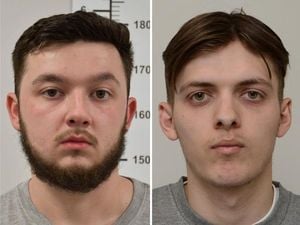A novel algorithm aimed at enhancing the detection of small targets from aerial images has been developed, known as PARE-YOLO. This advanced model, based on YOLOv8, incorporates innovative multi-scale attention mechanisms to improve its performance significantly. Small object detection has been notoriously challenging due to the complex environments and varying scales often experienced during drone-captured imagery. Conventional detectors typically struggle when it relates to accurately identifying smaller objects, which can easily become occluded or confused with their backgrounds.
The PARE-YOLO algorithm responds to these challenges by reworking its original architecture to facilitate more effective feature extraction and fusion across multiple scales. By introducing restructuring within the neck network, the model adapts its detection capabilities to focus on small objects, leading to improved accuracy and robustness even amid cluttered backgrounds.
Recent evaluations employing the VisDrone2019 dataset have shown the PARE-YOLO model achieving remarkable success, surpassing its predecessor YOLOv8 by 5.9% mean Average Precision (mAP) at a threshold of 0.5. This enhancement is not merely numerical; it signals significant advancements in the model's detection performance within complex aerial contexts.
At the core of the improved PARE-YOLO architecture are several key contributions. First, the model replaces the conventional C2f module with the newly proposed C2f-PPA module, enabling enhanced multi-scale feature representation through attention mechanisms. Second, it introduces the EMA-GIoU loss function, carefully calibrated to mitigate class imbalances inherent in small object datasets. This function has been integral to enhancing robustness when demanding scenarios arise, such as those characterized by skewed class distributions.
Meanwhile, the adaptation of intelligent lightweight detection heads, optimized for small objects, allows PARE-YOLO to maintain high accuracy with reduced computational complexity. These innovations represent substantial progress intended for real-time object detection scenarios where efficiency is as important as accuracy.
Comparisons with other algorithms on the same datasets reveal PARE-YOLO's superior performance, contributing to its viability for future applications in aerial technology. It advances beyond previous YOLO iterations, including YOLOv9 and YOLOv10, marking it as leading-edge within this niche of image processing capabilities.
Visual observations using Grad-CAM technology have confirmed the model's enhanced detection abilities under challenging conditions, such as low lighting and complex backgrounds. This evidence reinforces claims of more effective feature extraction, particularly for small objects often missed by prior detection models.
These breakthroughs do not merely reflect improvements on the algorithmic level; they pave the way for enhanced applications across industries reliant on drone technologies, spanning from environmental monitoring to surveillance and logistics. While challenges remain—such as the occasional misclassification or omission of targets—the future looks bright for real-time object detection.
A significant emphasis for future research will be on optimizing this algorithm for lighter configurations to maximize usability without undermining performance standards. The developments outlined with PARE-YOLO highlight its potential impact, not just as another iteration of object detection models but as a pivotal advancement capable of transforming the practices associated with aerial imagery and analysis.



